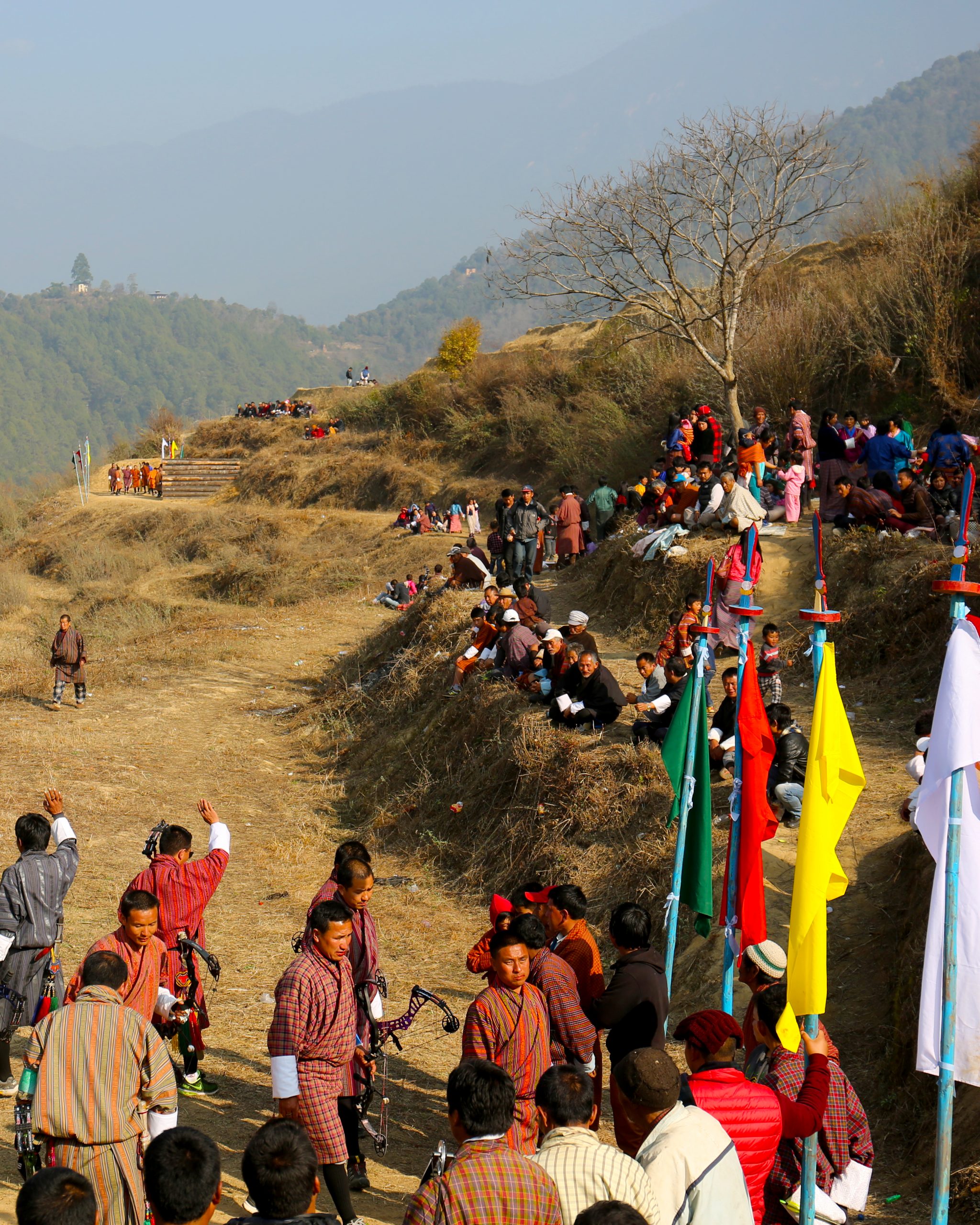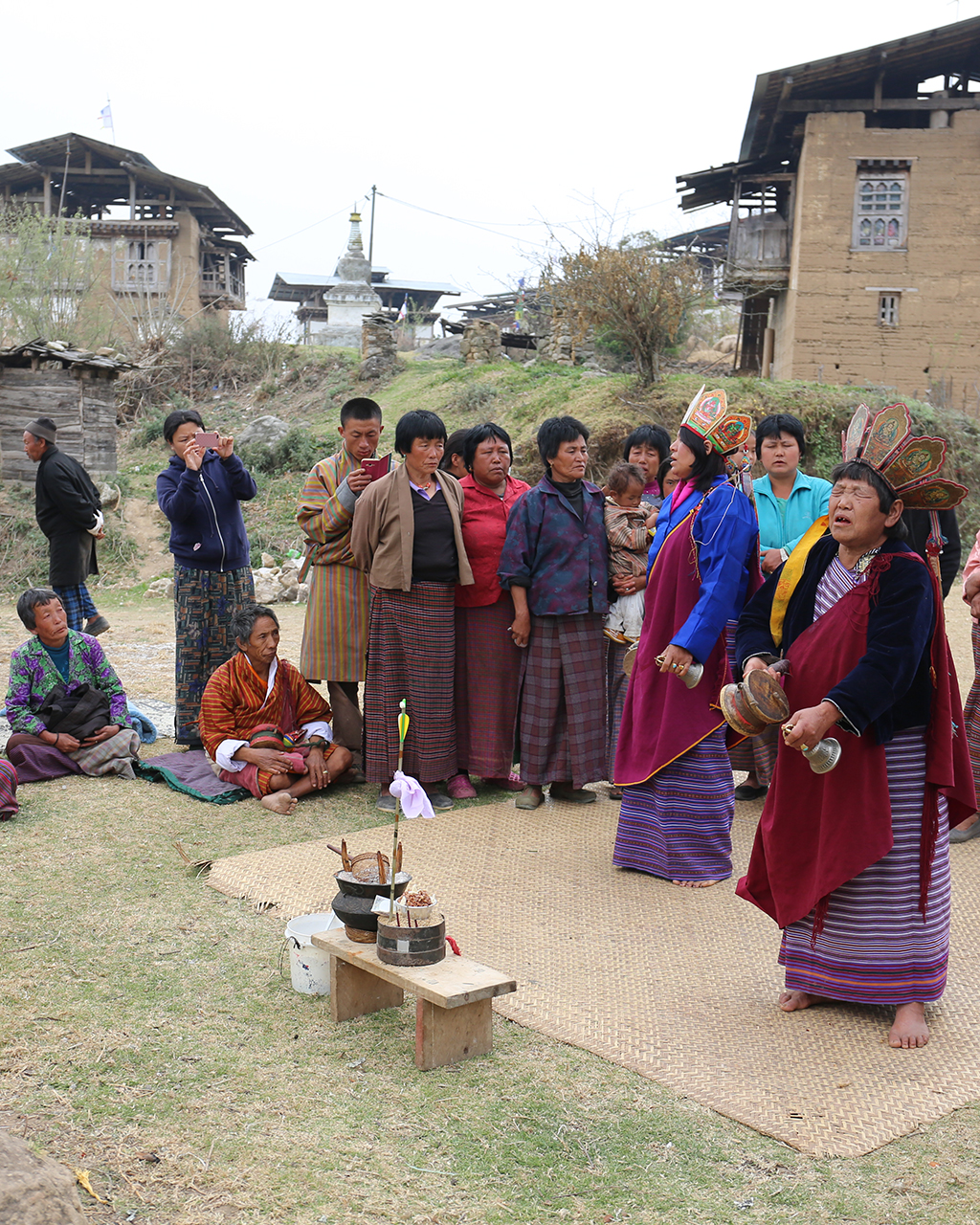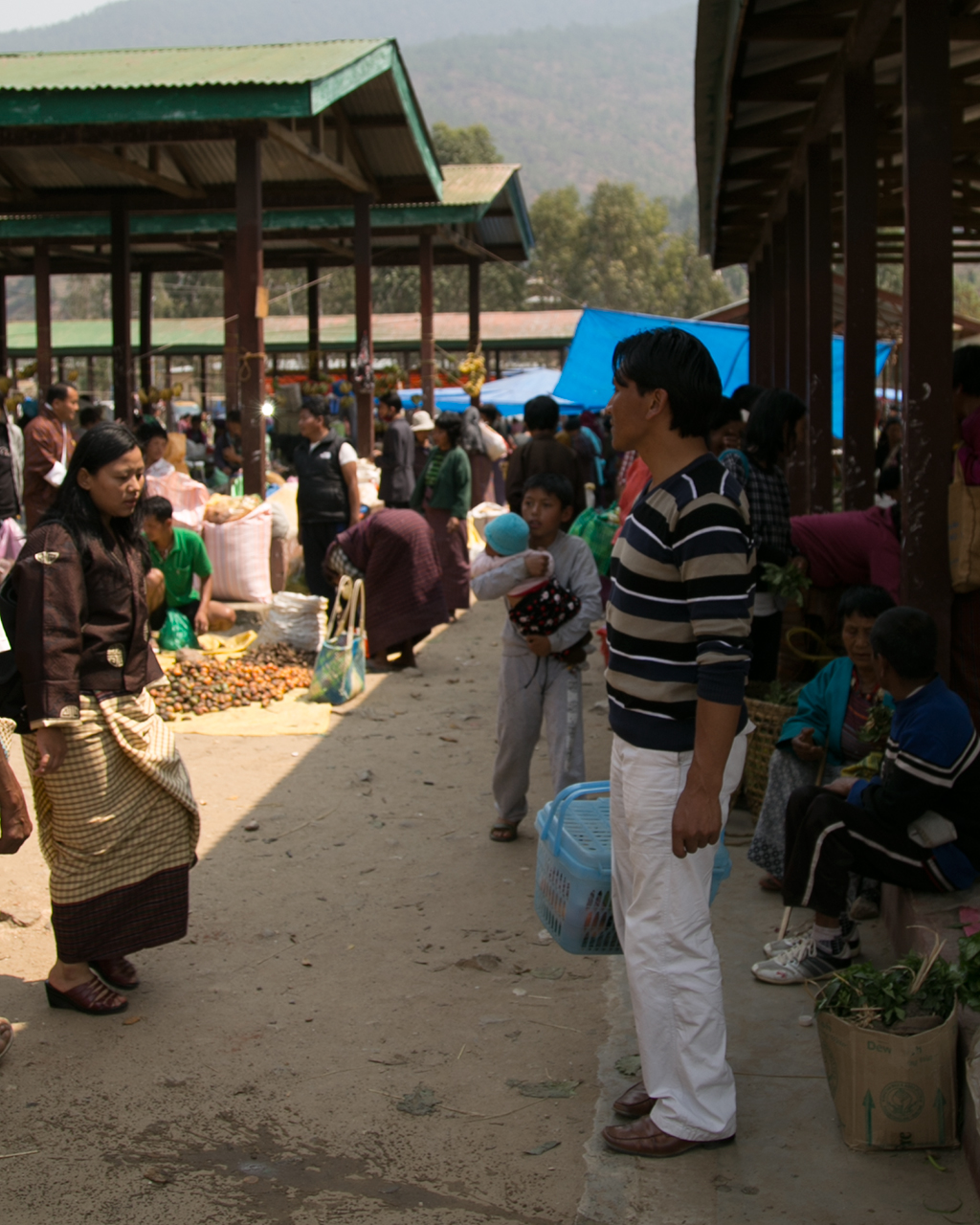Meetings and Gatherings

Ugyen wants to celebrate Losar – the New Year – with everyone in the village. He speaks of the harvest festivals in his childhood where the entire village gathered in the temple grounds or vacant fields to cook, drink and make merry together. Tents were set up, and the program went on all day and night with dancing, singing and games. With most families having grown smaller in size as people move to the city, these celebrations have grown rarer and more individualistic. He hopes this year’s celebrations will bring home all those who have moved to the city.
Most villages in Bhutan have a small population forming a tight knit community, and formal gathering spaces have not evolved a spatial importance. Informal gatherings take place at people’s homes, or at any corner in the village – a drink, a domaLike elsewhere in South Asia, chewing doma pani (བདོག་མ་པ་ནི་) is popular throughout Bhutan. Also referred to simply as doma (བདོག་མ་), the collation consists of a quarter or more of the areca nut (Areca catechu; doma), betel leaves (pani or paan) as it is known in South Asia, and a dab of slaked lime (tsuni, derived from chunain Hindi). https://texts.shanti.virginia.edu/book_pubreader/40706… or a meal shared. Most larger gatherings take place in the temple premises or a vacant field near the archery ground. There is an annual pooja held in the village, conducted by a different family each year. Family members from far off places are invited, and those living in the city return for the celebration.

A vibrant memory in Ugyen’s childhood is from the visits from travelling merchants. The everyday routine of the village would sometimes be interrupted by strangers travelling from distant lands, laden with fascinating items and tales from afar. In exchange for rice, wheat or buckwheat, they offered yak cheese, herbs, and weaves from all over. The news and ideas from places he had only heard of opened Ugyen’s young mind to the world. Their appearances, habits and stories stay with him till today.
Apart from the annual poojas, the most significant rituals observed in the village concern one’s movement from this world to the next. While birth and marriages are seen as simple transitions, death is more significant. The chortenChorten or Stupa is an important religious monument in Buddhism, symbolizing Buddha’s presence. It also holds precious Buddhist relics and sometimes even preserved bodies of renowned lamas. Read more about Chortens on Tibetpedia Read more about Chortens in Bhutan in this article in the Bhutanese Daily BBS. is an architectural element seen throughout the country, a structure in the memory of a loved one. They are built to obtain the blessings of the Buddha, protect from evil spirits, and serve as spiritual markers in the village.

Family and group picnics are an inherent part of Bhutanese culture. Ugyen fondly recalls the annual picnics of his childhood. In the pleasant winter season, when fieldwork was reduced, families and friends would visit the Puna Tsang Chhu river for their vacation. Setting up their tents at a convenient location, they spent a week bathing in the natural rock pools and exploring the shore. The picnic tradition has survived in a way till today, when friends and colleagues might make shorter day trips to the countryside.
There were also times when people of Ugyen’s Village went to sell their produce at the PunakhaPunakha (Dzongkha: སྤུ་ན་ཁ་) is the administrative centre of Punakha dzongkhag, one of the 20 districts of Bhutan. Punakha was the capital of Bhutan and the seat of government until 1955, when the capital was moved to Thimphu. https://en.wikipedia.org/wiki/Punakha market. Walking on foot and with the grain, vegetable and meat laden on horses and mules, it took them the better part of the day. People would traverse along the river, through fields and valleys, past chortensChorten or Stupa is an important religious monument in Buddhism, symbolizing Buddha’s presence. It also holds precious Buddhist relics and sometimes even preserved bodies of renowned lamas. Read more about Chortens on Tibetpedia Read more about Chortens in Bhutan in this article in the Bhutanese Daily BBS. More along the way, lunching along the river bank. At the market, they would barter the excess from their farm in exchange for products that they did not have. In Ugyen’s opinion, the traders are better equipped to transition to the changing times and economy, their exposure and experiences enabling them to adapt easily and in more innovative ways.

The market space itself was neither assertive nor imposing – flexible semi covered stalls where sellers were accommodated on platforms and displayed their wares. It allowed interactions, arguments and camaraderie to develop between the people, remaining a backdrop to the human element. The importance of the market was its relevance as a place to meet and understand other people – expand one’s world through new products, new conversations and new concepts. Today, not many people go to sell their grain to the market. Most families grow less grain, just sufficient for their smaller families. Their children work in Thimphu or any of the small towns that have emerged and buy things for the parents back home. While their living conditions have become more convenient and comfortable, their connection with the outside world has grown more passive because of the television, which broadcasts the King’s word and Buddhist teachings, along with soap opera style programs which have mesmerized most of the population.
Marketplaces are magical windows to other worlds, the exchange of goods extending to an exchange of ideas. While the old markets may have lost their relevance, alternatives for this exchange have not emerged. The internet does play some of that role, but it can only augment and not completely substitute the ability to meet and interact with completely new people. Modern malls are limited in their approach to sale of goods and services, and do not act as platforms for exchange.. Where would we go today, if we felt the necessity, a bit of curiosity to expand our imagination?
Vignettes




